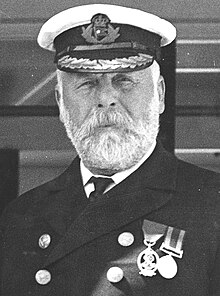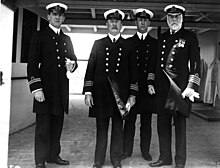There is an ad in the latest New York Times Review of Books (November 20, 1997) that really shook me up. It is for a book called “The Feminist Interpretation of Immanuel Kant”. It is edited by Robin May Schott, in case you want to order it.
Now, hey, I’d be the first person to say that it’s about time someone over-hauled the old transcendental critique of pure reason, I mean, after all, it’s only been out of date since about fifteen minutes after it was printed, but even I would never have guessed that the feminists would be the ones to put the last nail in the coffin. I’m not sure Immanuel would be pleased. I think he said something like “feminism is destroying our society” or something like that at one point in his career, probably just after his wife left him.
But you know, the next time some dark-minded pundit goes on and on about how our society is just falling apart and things have never been so bad and our youth have really lousy manners, and Hollywood sucks, and so on, I’m going to think about those feminists out there reinterpreting Immanuel Kant and breathe a quiet little sigh of relief. If there is one thing more amazing than any other about our society, its our ability to chew up and regurgitate almost any idea, any image, any concept, and spit it out again as lively and ripe as if it were new.
Like Immanuel Kant. It would have been audacious enough if the feminists had taken on Wittgenstein or Popper, but Kant? So what do the feminists have to say? I don’t know. I haven’t read the book yet. But I’ll bet they accuse Kant of building his entire rigid, rational system of thought on some misdirected patriarchal impulse to rule reality with an iron fist. And I’ll bet the feminists believe that a view of reality more harmonious with natural, empathetic impulses would have worked better. If I remember my college philosophy correctly, Kant was trying to rescue Reason with a capital “R” from Descartes’ radical critique, which consisted of declaring that the only thing you could know for sure was that you existed. Both of them sound a little anal retentive to me. The women probably point out that doing the laundry, cooking, and cleaning, require some pretty fundamental ontological conclusions about cause and effect that can’t be justified by going for a walk every day trying to think up new categories of existence.
Then along comes Sartre who believed we don’t exist in a static sense at all. We are constantly in the state of becoming, and that’s why we are free, unless, of course, your wife expects you home for supper. I’ll bet Simone De Beauvoir had a few precious thoughts about this herself.
Wittgenstein thought we basically constructed a reality in our language, and so our society is really nothing more than a construct of the words we imagine to describe it with. I think the feminists might find a home there. You know how they love to get together and talk. Then there was Martin Heidegger. He believed that mankind had forgotten something very, very important about existence, but what it was we had forgotten he couldn’t seem to remember either, so he joined the Nazi party and continued to teach at a university in Germany throughout World War II. Nothing like a philosophy that stimulates you into positive action! I think the feminists wouldn’t like him. They would think that it’s not that hard to remember the important things, as long as you care about people.
Microsoft Philosophy 1.01
You can tell what philosophy Bill Gates believes in by running a spell check on little known recent philosophers in Microsoft Word and then analyzing the results. Watch:
| Philosopher | Result | Meaning |
| (Martin) Heidegger | headgear | groovy |
| (Imre) Lakatos | lactose | milk for the mind |
| (Paul) Feyerabend | no suggestions | vacant |
| (Albert) Camus | cameos | we only see reality in hazy profile |
| (Dan) Quayle | quarrel | don’t go into politics |
| (Hannah) Arendt | aren’t | we don’t exist, unless we’re banal and evil |
Hannah Arendt is the only woman on the list, and I don’t think most philosophers would place her next to Heidegger or even Imre Lakatos in terms of importance, but she did come up with one great idea. While in Jerusalem covering the Eichmann trial (Jewish agents had kidnapped Eichmann, a Nazi war criminal, from Argentina and spirited him away to Jerusalem for a show trial), she found herself at a loss for words to describe the utter mediocrity of this minor functionary who was partly responsible for the deaths of six million Jews, so she coined the phrase “banality of evil”*. Later on, she was sorry that she became so well known for that phrase alone. I have to admit, that’s about the only thing I know about Hannah Arendt myself, but I like the phrase, because it captures the idea that incredibly evil things can result from the actions or inactions of people who perceive themselves as being only minor cogs in a big machine. Raul Wallenberg was a minor functionary, but he saved hundreds of lives. Eichmann claimed that he was only following orders. The crew of the Enola Gay were only following orders when they dropped a nuclear bomb on Hiroshima (victors get to write history so we don’t seem to regard them as villains the way we regard the Germans, Italians, or Japanese). The crew of the Titanic sent lifeboats away half-filled because their orders were “women and children first” and the third-class women and children were still below decks, and the only other people present were men.
That’s the way most people behave– just following orders–and that may be the tragedy of the human race.
So if the feminists find a new way of thinking about reality that can convince most people that they should always do the right thing, even when it goes against orders or policy or whatever, then, hey, I’m all in favour of it.
* It appears that Hannah Arendt was wrong. The discover of more information about Adolf Eichmann revealed that he was, in fact, virulently anti-Semitic, and fully on board with the plans to exterminate the Jews.


